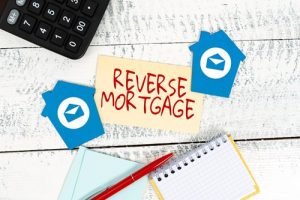
Thinking about how to stretch your retirement savings? If you own your home and are looking for additional income, a reverse mortgage might sound appealing. This option lets homeowners convert part of their home equity into cash without giving up ownership or moving out. While it can ease financial pressure, there are important details to understand before signing any paperwork.
Because this decision affects both your finances and your family, it’s smart to explore how a reverse mortgage works, what it costs, and how it fits into your long-term plans.
How a Reverse Mortgage Works
The qualifications for this type of loan include being at least 62 years old and using the home as your primary residence. Instead of making monthly payments to a lender, you receive funds based on the equity in your home. The money you receive isn’t taxed as income, which adds another layer of appeal for many retirees.
At the same time, you’re still responsible for property taxes, homeowners insurance, and basic maintenance. If then borrower doesn’t handle them, the reverse mortgage could be at risk of default. This is why understanding the requirements and ongoing responsibilities is so essential.
Different Payment Methods
Once approved, you can choose how to receive your money. Some retirees prefer monthly payouts to help with living expenses. Others choose a lump sum to cover big-ticket items like medical bills or home improvements. Additionally, you could opt for a line of credit that grows over time and borrowers can access it any time.
Because your needs may change, consider how each payment option supports your current and future financial goals. Having flexibility is helpful, but making the wrong choice early on can limit options later.
The Importance of Home Equity
The more equity you’ve built in your home, the more potential benefit a reverse mortgage can offer. That’s why this loan works best for retirees who’ve either paid off their home or have only a small remaining balance on their current mortgage.
If you still owe money on your original mortgage in Charleston SC, part of the reverse mortgage will need to go toward paying it off. As a result, the amount of cash available to you may be reduced. Because of this, it’s important to understand how your home’s value and any existing debt affect your loan options.
Understand the Costs Linked to a Reverse Mortgage
Like any loan, a reverse mortgage comes with fees. These can include an appraisal fee, loan origination fee, and closing costs. Additionally, there may be ongoing costs like mortgage insurance and servicing fees. While these are often rolled into the loan balance, they do reduce the equity left in your home.
Another key requirement is a counseling session with a HUD-approved advisor. This helps ensure that you fully understand what you’re signing up for—and that the loan fits your financial situation. Because this step is mandatory, it’s a good chance to ask questions and clear up any confusion.
Payback and Long-Term Planning
This loan doesn’t need to be repaid until you sell the home, move out, or pass away. However, when that happens, the loan balance—including interest and fees—must be paid in full. In most cases, this means selling the home.
For families hoping to pass down a home to children or grandchildren, this is something to think carefully about. Since the home may need to be sold to cover the debt, heirs might not have the option to keep it. Still, if your priority is maintaining your quality of life during retirement, a reverse mortgage may help.

Talking to Your Family About a Reverse Mortgage
Because this loan affects more than just the borrower, it’s worth discussing it with close family members. Explaining why you’re considering a reverse mortgage and how it fits into your broader retirement plan can reduce misunderstandings later. Especially if you plan to use the funds for specific goals, keeping your family informed helps align expectations.
Although the money may be useful for daily expenses, home upgrades, or travel, your loved ones may have concerns about how it impacts future inheritance. Honest conversations now can make transitions easier in the future.
Use the Funds Wisely
It’s easy to be tempted by a sudden influx of cash. That’s why it’s helpful to create a spending plan before the money arrives. Think about how long you’ll need the funds to last and what expenses they should cover.
For example, you might use part of the loan to make your home safer and more comfortable for aging in place. Or you could use the funds to pay for long-term care, pay off debts, or support daily living costs. Without a plan, the money may not stretch as far as you’d like.
Consider Alternatives Before Committing to a Reverse Mortgage
While reverse mortgages in Charleston SC work well for some retirees, they’re not the only way to access home equity. Depending on your situation, refinancing your current mortgage or downsizing to a smaller home might provide similar benefits without reducing your estate.
Additionally, some retirees use home equity loans or lines of credit, which offer flexibility without some of the same long-term risks. That said, these options do require monthly payments, which may not suit every budget. Exploring all possibilities can help you make a confident and informed choice.
Short-Term Relief vs. Long-Term Goals with a Reverse Mortgage
Because retirement lasts longer for many people today, financial planning needs to cover decades—not just a few years. While a reverse mortgage may solve immediate concerns, it’s still important to weigh how it aligns with your overall financial picture.
For instance, will the loan help you stay in your home longer? Will it free up money for other important needs? Or could it create new complications later on? Weighing the pros and cons of a reverse mortgage with these questions in mind can help you stay focused on what matters most.
Call South Carolina Reverse Mortgage Services now to learn how a reverse mortgage could support your retirement goals and help you live with more financial freedom.
